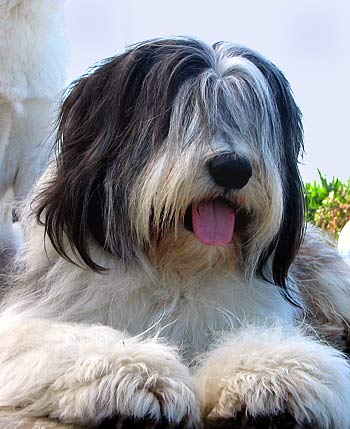
Polish Lowland Sheepdogs - PONS

Sasquehanna Literat "Leo" July 2, 2007
Kivalina...Quality Siberian Huskies and Polish Lowland Sheepdogs
The Path To Selective Breeding
by Andrea Erickson
Kivalina...Quality Siberian Huskies and Polish Lowland Sheepdogs
|
Criticism and Evaluation In renowned late judge Anne Rogers Clark’s book “Annie
On…Dogs!” she begins one
chapter by saying that she dislikes reading articles that begin with a
definition from Webster’s. She
then proceeds to use the definition of the word criticize. From the current online Merriam Webster’s dictionary, “ criticize
– 1: to consider the merits and demerits of and judge
accordingly: evaluate
2
: to find fault with: point out the faults of.”
Annie’s definition was “ to analyze with knowledge” Criticism is a very necessary part of breeding and showing
dogs. However, so many take
exception to any form of criticism.
The first step is to be the one to criticize your own dogs,
in other words “analyze with knowledge”.
The key word here is “knowledge”.
Knowledge of structure and movement is vital in interpreting the
breed standard. If one does not have the knowledge of structure and movement,
then they must rely on the criticism of others more knowledgeable.
And this is where the defense mechanism kicks in.
If your dog does not have proper proportions, be the first to
admit it. If your dog is
small, admit to it. If your
dog’s movement lacks reach and/or drive, admit to it!
Or, as Dr. Phil says “own it”!
You cannot change what you won’t admit to.
And, when breeding dogs, admitting to the fault and breeding to
change it are two very important issues. Corrective
Breeding
Ideally, it is best to start a breeding program with the best
possible specimen of the breed. We
all know that there is no perfect dog, at least I hope we all know that! Again, I will go back to the statement that I made
previously, “knowledge of structure and movement is vital in
interpreting the breed standard”, and applying the breed standard to
the individual dogs is the first step in choosing the right mate. All too often, stud dogs are chosen because of the location,
friendships with the owners or contract stipulations, most of which are
poor reasons for selecting a dog for breeding.
Remember, in breeding, the object is to improve the breed and to
provide the breeder with future dogs to continue a top quality line of
dogs. Planning a litter involves not only looking at the immediate
result, but also looking to the future and what can be achieved in the
following generations. Some
faults cannot be corrected in one generation or even in two.
A breeder needs to be able to think ahead and have a definitive
plan. It is also important to look to the past and recognize faults
and mistakes so that they are not repeated.
Next Month – Evaluating the breeding pair
|
CopyrightAndrea Erickson2007 – Permission to reproduce in
any form MUST be obtained from the author
ponbreeders/internationalrecipes/faq/barbedwires/pondefenseunit/mikeyread/selectivebreeding/ponhoroscopes